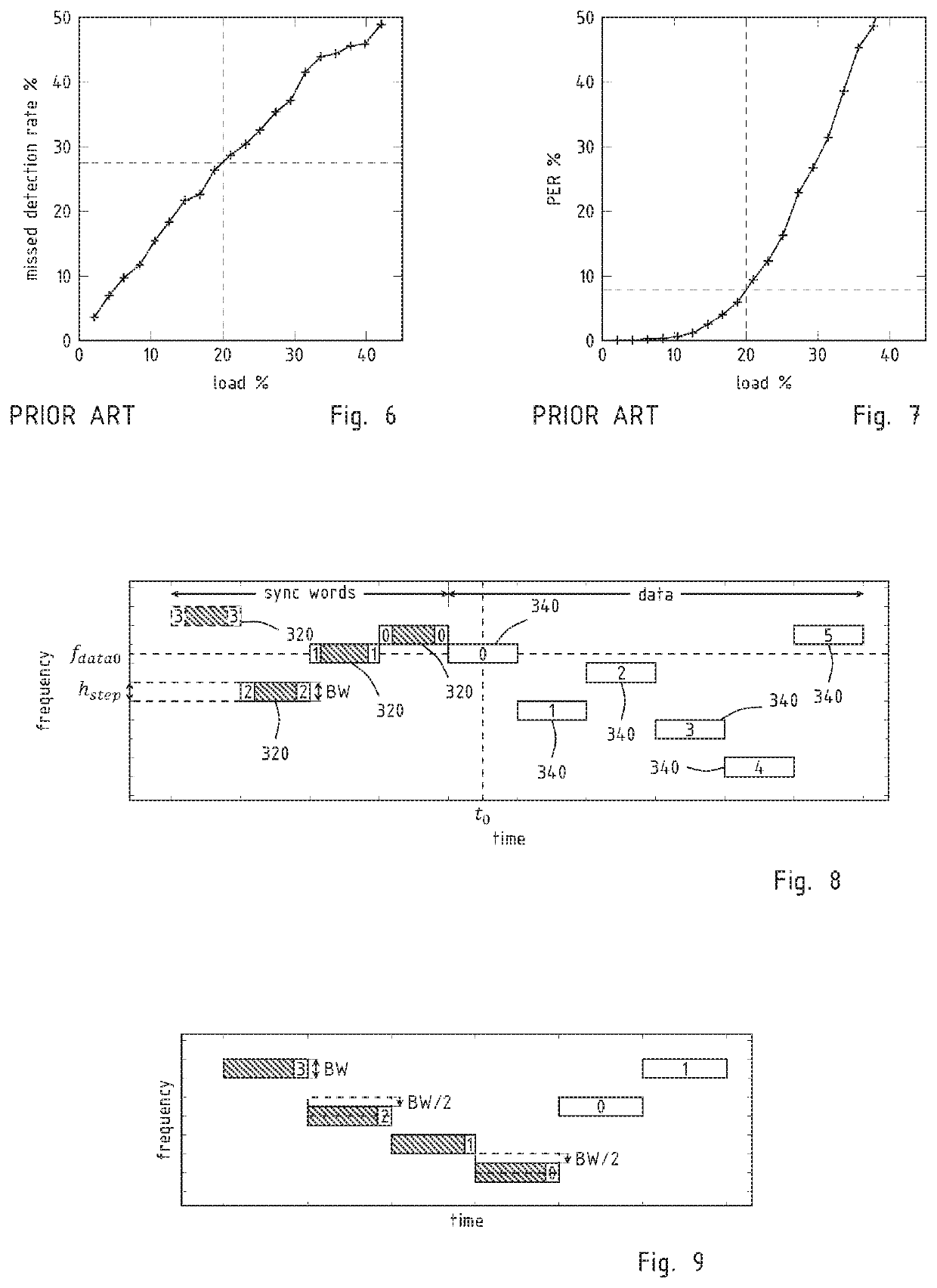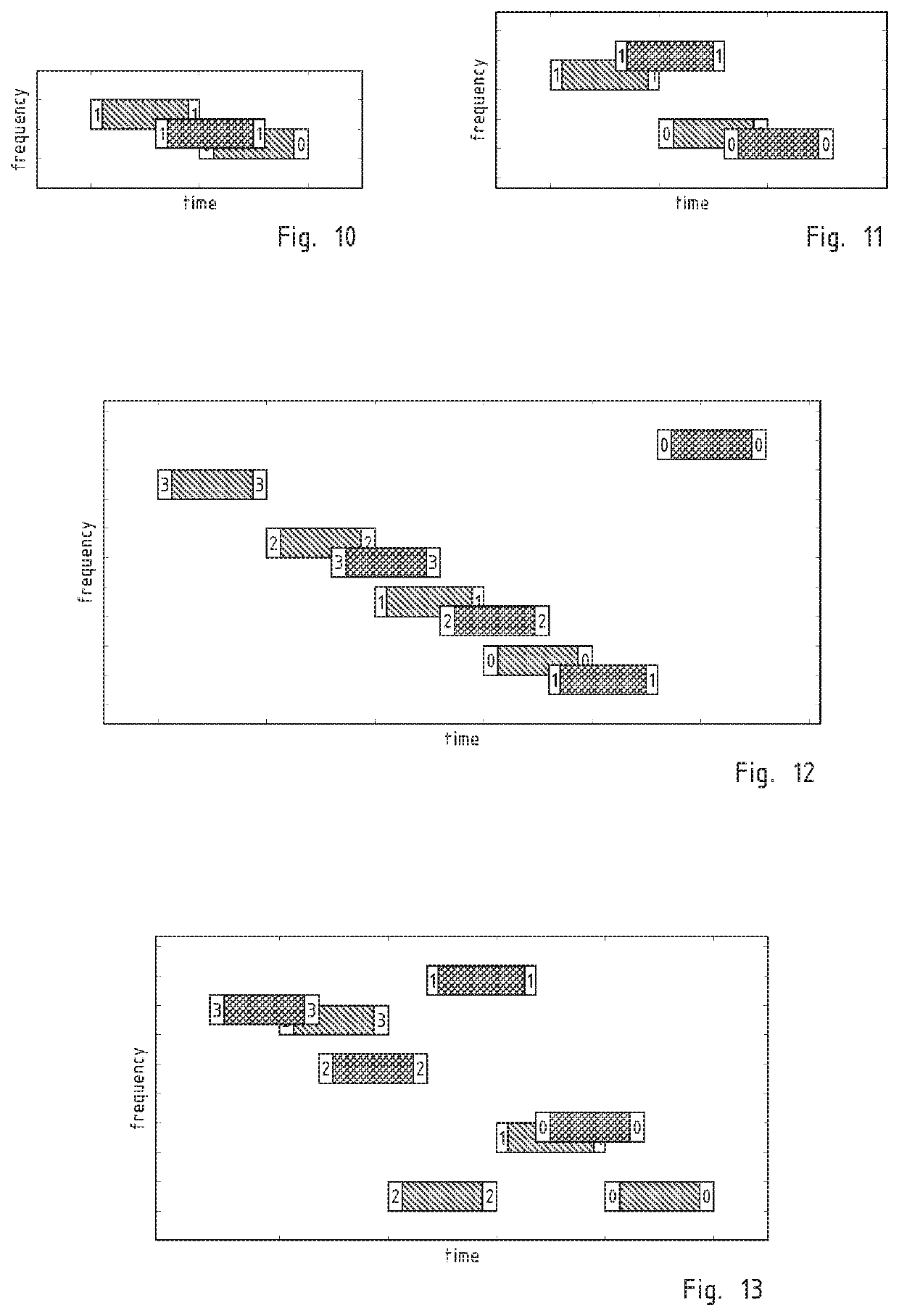Low-power, frequency-hopping, wide-area network with random medium access
a wide-area network and low-power technology, applied in the field of low-power, frequency-hopping, wide-area network with random medium access, can solve the problems of not always available or desirable, local infrastructure connected to the internet, and hardly applicable to mobile applications
- Summary
- Abstract
- Description
- Claims
- Application Information
AI Technical Summary
Benefits of technology
Problems solved by technology
Method used
Image
Examples
Embodiment Construction
[0024]FIG. 1 shows, in simplified fashion, a low-power wireless network that includes many sensor nodes S0, S1, S2 and receiving gateways G0, G1. In a typical IoT application, the sensor nodes S0, S1, S2 will be simple battery-powered devices that acquire or compute data and upload them (for ex., arrow 80) to the gateways G0, G1. Although not essential, also downlink traffic (for ex., arrow 50) from the gateways to the nodes is possible.
[0025]The number of sensor nodes is not limited, and may exceed several thousands in real use cases. The number of gateways is also not bound, and is dictated by the need of covering the area in which the sensor nodes are found. Preferably, the network is designed such that each sensor is in the receiving range of at least one gateway or, preferably, several ones.
[0026]The uplink communications 80 between sensor nodes and gateway uses narrow bandwidth or ultra-narrow bandwidth modulation and frequency hopping spread spectrum. The modulation is prefer...
PUM
 Login to View More
Login to View More Abstract
Description
Claims
Application Information
 Login to View More
Login to View More - R&D
- Intellectual Property
- Life Sciences
- Materials
- Tech Scout
- Unparalleled Data Quality
- Higher Quality Content
- 60% Fewer Hallucinations
Browse by: Latest US Patents, China's latest patents, Technical Efficacy Thesaurus, Application Domain, Technology Topic, Popular Technical Reports.
© 2025 PatSnap. All rights reserved.Legal|Privacy policy|Modern Slavery Act Transparency Statement|Sitemap|About US| Contact US: help@patsnap.com



